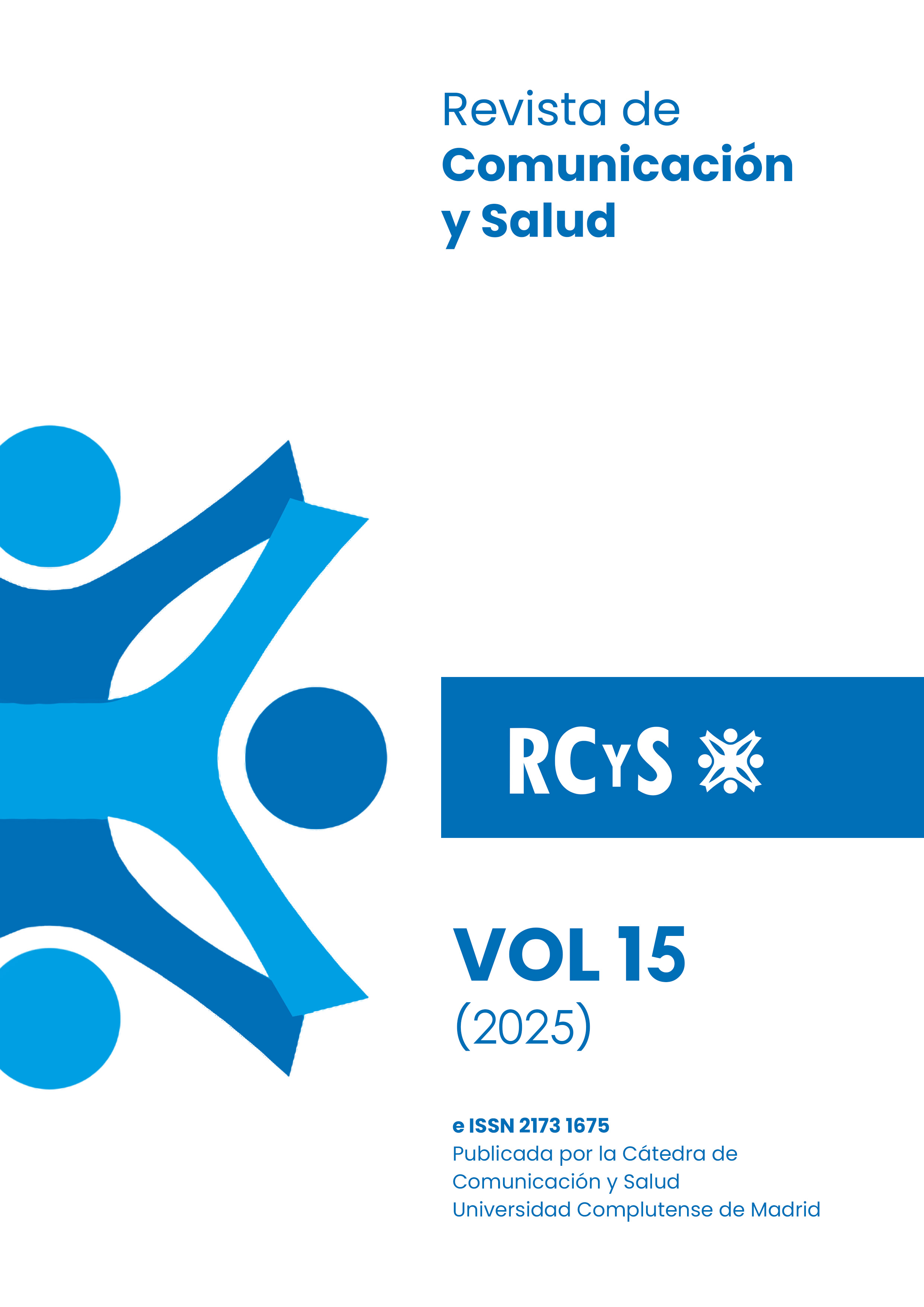Study of communication exchanges in hospital assistance through medical students
DOI:
https://doi.org/10.35669/rcys.2025.15.e373Keywords:
communication in healthcare, active listening, communication skills, compassion, empathy, healthcare assistanceAbstract
Introduction: Communication is key in healthcare systems. This study had the objectives of training medical students in communication and, at the same time, understanding how communication was being carried out at a clinical and interpersonal level in our hospital. Methodology. A teaching activity was proposed to medical students. They were offered to observe communication skills while attending their clinical rotation. First there was an initial session in which the main elements of communication in healthcare systems were reviewed. They were asked to complete an empathy survey and received different tools for collecting observations including a 16-option form specifically developed, which they could use to assemble observations in a more closed and anonymous format. A qualitative analysis of the observations raised in the focus group was planned, as well as a quantitative analysis of the answers made through the online survey. Results and discussion. The main result observed is that a specific training action in students can be useful both for their learning about communication and, in addition, for knowing the reality of these skills in a particular center. The particularities of patients and healthcare providers mean that each care process has its own uniqueness and needs to be approached in different ways. Conclusions. Rotation of students through clinical services generates many training opportunities. Immersing in real care allows them to exercise clinical reasoning, relate and apply theoretical knowledge. But it is also the forum where they can soak up transversal skills that make the most off professionalism, such as empathy, compassion, and all the emotional skills necessary for communication.
Downloads
References
Barrientos-Báez, Almudena; Rodríguez Terceño, José; Caldevilla-Domínguez, David y Barquero Cabrero, Mario (2020). Redes sociales: educación superior en salud e inteligencia emocional. En C. J. Santos-Martínez y D. J. Luquetta-Cediel (Coords.), Praxis educativa, inclusión e innovación TIC en la educación superior. Editorial Uniautónoma. http://hdl.handle.net/11619/3987
Carretero-Díaz, Miguel Ángel; Barrientos-Báez, Almudena y Caldevilla-Domínguez, David (2022). Neurocomunicación y proyecto «cuidador complutense»: aplicación en el cuidado de las personas mayores. En Ubaldo Cuesta, Almudena Barrientos-Báez y Luz Martínez-Martínez (Coords.), Los nuevos materiales de la comunicación y la salud. Colección: Comunicación, Neurocomunicación y Salud. Fragua.
Costa Sánchez, Carmen (2011). La comunicación en el hospital. La gestión de la comunicación en el ámbito sanitario. Comunicación Social Ediciones y publicaciones.
Cuesta, Ubaldo; Ugarte, Aitor y Menéndez, Tania (Coord.) (2008). Comunicación y salud. Avances en modelos y estrategias de intervención. UCM Editorial Complutense.
Fondevila-Gascón, Joan; Barrientos-Báez, Almudena; Caldevilla-Domínguez, David y Montero Gascó, Pol (2024). Herramientas de marketing interactivo en el sector sanitario: estudio de caso de la app Mi Salud. Revista Cubana de Información en Ciencias de la Salud, 35, e2257. https://acimed.sld.cu/index.php/acimed/article/view/2257
Jolliffe, Darrik y Farrington, David (2006). Basic Empathy Scale (BES) [Database record]. APA PsycTests. https://doi.org/10.1037/t42339-000 DOI: https://doi.org/10.1037/t42339-000
Mendoza Maldonado, Y. y Barría Pailaquilén, M. (2021). La comunicación en salud y la necesidad de integración interdisciplinaria. Revista Cubana de Información en Ciencias de la Salud, 32(3). https://acimed.sld.cu/index.php/acimed/article/view/1692
Merayo, Antonio; Bravo, Esteban y Gordón, Fernando (2014). La Comunicación con el paciente. Habilidades emocionales para los profesionales de la salud. Elsevier.
Mezzich, J. E. (2014). Prólogo. En R. Ruiz Moral (Coord.), Comunicación Clínica. Principios y habilidades para la práctica. Editorial Médica Panamericana.
Schiavo, Renata (2013) Health communication: from theory to practice. Jossey-Bass.
Downloads
Published
How to Cite
Issue
Section
License
Copyright (c) 2024 Diego Matos Agudo (Autor de Correspondencia); Francisco Javier Rubio Gil, Enrique Nieto Manibardo, José Carlos Gómez Sánchez

This work is licensed under a Creative Commons Attribution-NonCommercial 4.0 International License.
Disclaimer: As of 2023, RCyS is licensed under the Creative Commons Attribution-NonCommercial 4.0 International License (CC BY-NC 4.0).
Articles from 2011 to 2022 are under a Creative Commons CC BY 4.0 License that allows copying and redistributing the material in any medium or format, remixing, transforming and building upon the material for any purpose, including commercial.
We also inform that RCyS is adhered to the Declaration of Berlin.






